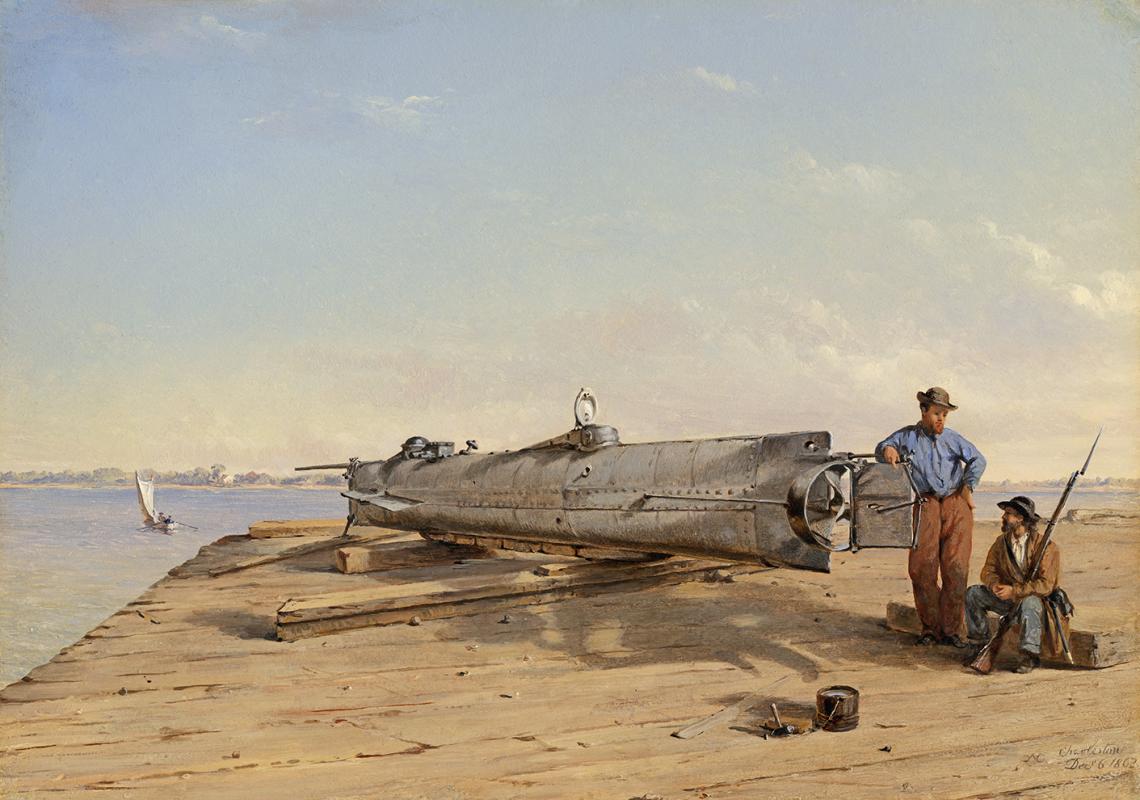On the chilly evening of February 17, 1864, the waters off Charleston Harbor became the stage for an unprecedented event in naval warfare. The CSS Hunley, a Confederate submarine, embarked on a daring mission that would forever alter the course of maritime military engagements.

The CSS Hunley’s journey to that fateful night was marked by innovation interspersed with tragedy. As the first combat submarine to successfully sink an enemy ship, the Hunley was a marvel of Confederate engineering, embodying the desperate ingenuity of a nation at war. Despite its groundbreaking design, the Hunley’s operational history was fraught with peril. It suffered several accidents during testing, claiming the lives of its crews, including that of its inventor, Horace Lawson Hunley. These early misfortunes cast a shadow over the submarine, yet it persisted, driven by the promise of breaking the Union blockade that stifled the Confederate ports.
The night of February 17 was cloaked in darkness, with a new moon rendering the skies nearly as black as the waters below. The Hunley, operating under the cover of this obscurity, approached its target with silent determination. The conditions were far from ideal, with the cold Atlantic waters threatening to seep into the Hunley’s confines. Yet, the crew, led by Lieutenant George E. Dixon, pressed on, their resolve hardened by the knowledge that their mission could shift the balance in favor of the Confederacy.
The USS Housatonic, a Union sloop-of-war, lay at anchor, unaware of the impending threat lurking beneath the waves. The Hunley, armed with a spar torpedo packed with explosive power, maneuvered close to its hull. In a moment fraught with tension, the Hunley deployed its torpedo against the Housatonic’s side, causing a massive explosion. The Union ship, critically damaged, began to sink rapidly, marking the first successful submarine attack in history. The Hunley had achieved its objective, but at a grave cost.
The Housatonic’s crew scrambled to abandon ship as it settled into the sea, a testament to the destructive potential of underwater warfare. Despite the chaos, there was a notable absence of panic, as most of the crew managed to survive the attack. The sinking of the Housatonic served as a stark reminder of the evolving nature of naval combat, introducing a new dimension of warfare that would have lasting implications.

Those remaining onshore awaited the return of the Hunley with bated breath. The submarine was expected to signal its success and safety by displaying blue lights upon nearing the harbor. However, as hours turned into days, the anticipated signal never came. The Hunley had vanished into the depths, its fate shrouded in mystery.
The disappearance of the Hunley remained one of the American Civil War’s enduring enigmas for over a century. It was not until 1995 that the submarine was discovered off the coast of Charleston, and it was raised in 2000 for preservation and study. The discovery provided some answers but also posed new questions about the circumstances leading to its sinking after the attack.
The attack on the USS Housatonic by the CSS Hunley marked a pivotal moment in naval warfare, introducing the concept of submarine warfare that would come to dominate 20th-century conflicts. The courage of the Hunley’s crew and their pioneering spirit left a legacy of innovation and sacrifice in the face of adversity. This event, while a single chapter in the vast narrative of the American Civil War, underscores the relentless pursuit of strategic advantage, no matter the cost.
The Hunley’s attack on the Housatonic stands as a testament to human ingenuity and the unfathomable depths of courage found in the heart of conflict.
Leave a comment